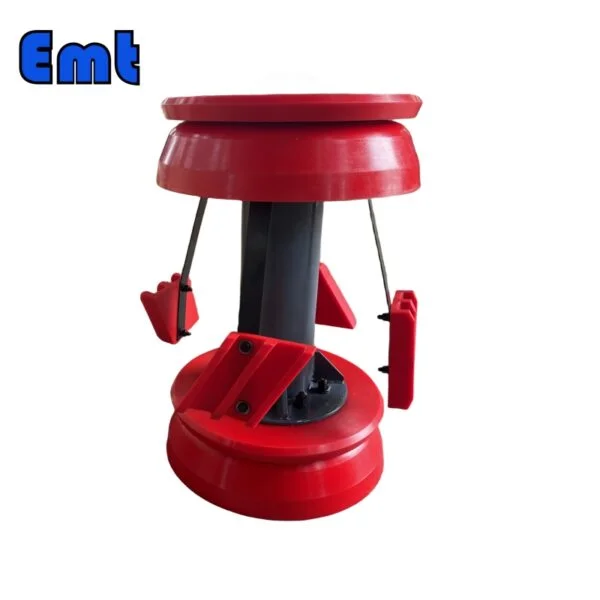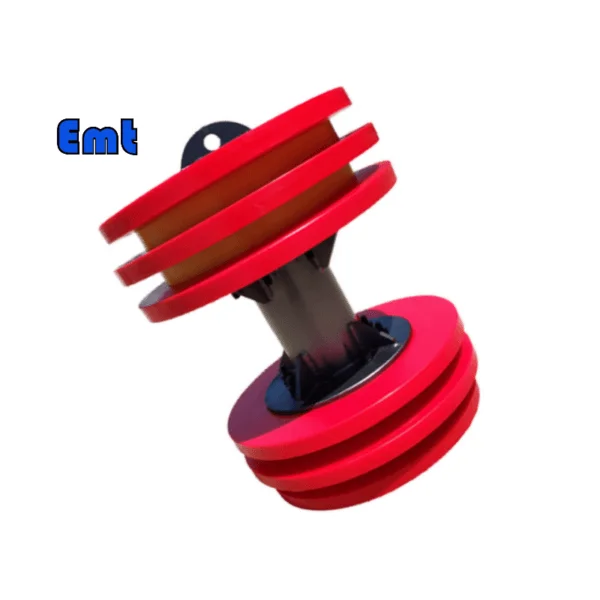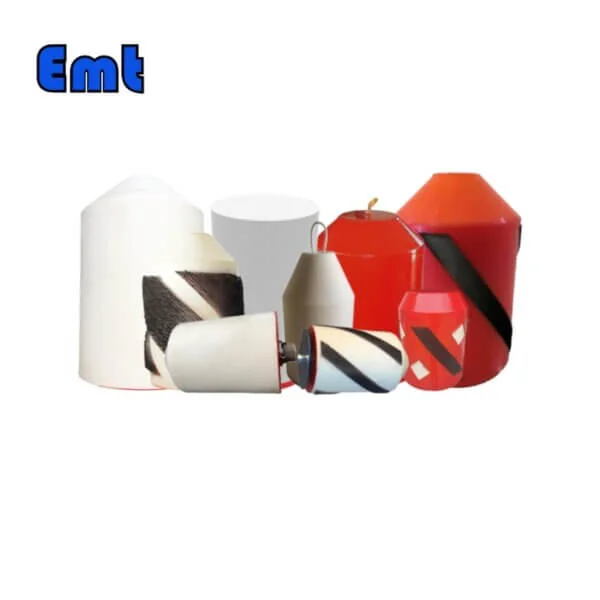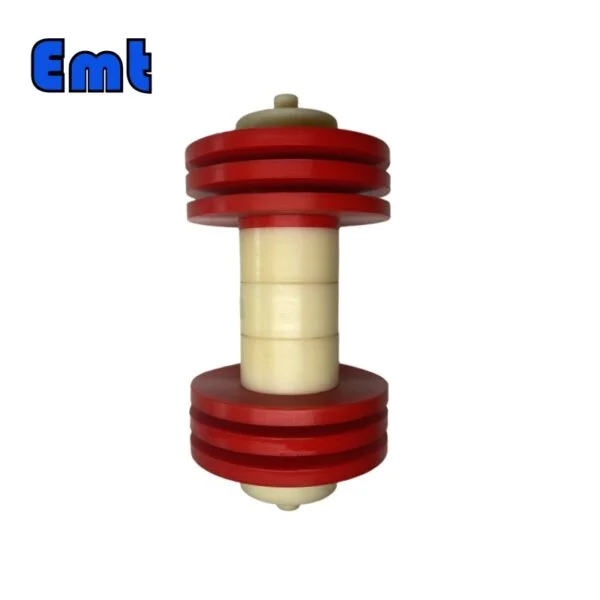Deskripsi
Perkenalan
Penjelasan singkat tentang istilah "babi babi"
"Babi" mungkin terdengar sedikit aneh, terutama karena tidak ada hubungannya dengan babi asli. Di dunia pemeliharaan pipa, ia memiliki kepentingan yang sangat berbeda dan penting. "Pembersih pipa" ini adalah perangkat yang dimasukkan ke dalam pipa untuk melakukan berbagai tugas pemeliharaan, seperti membersihkan, memeriksa, dan bahkan memisahkan produk yang berbeda dalam pipa yang sama. Proses menggunakan perangkat ini disebut "Pigging."
Pentingnya Pemeliharaan Pipa
Dalam industri yang sangat bergantung pada saluran pipa, seperti minyak dan gas, pemrosesan kimia, dan makanan dan minuman, memelihara pipa adalah tugas penting. Jalur pipa ini seperti pembuluh darah industri ini, mengangkut bahan baku, perantara dan produk jadi dari satu tempat ke tempat lain. Seiring waktu, dinding bagian dalam pipa -pipa ini dapat ditutupi dengan sedimen seperti lumpur, karat atau puing -puing lainnya. Akumulasi ini dapat menyebabkan berkurangnya efisiensi operasional, penyumbatan dan korosi, yang dapat menyebabkan kerugian ekonomi yang signifikan dan masalah keamanan. Oleh karena itu, pembersihan dan inspeksi pipa secara teratur sangat penting untuk memastikan kelancaran operasi industri ini. Di sinilah "babi babi" berperan, memainkan peran penting dalam menjaga pipa tetap sehat dan efisien.
Sejarah Pipa Pipa
Asal istilah "Pigging"
Istilah "pigging" berasal dari hari -hari awal pembersihan pipa. Ketika seekor babi pembersih diangkut melalui pipa, ia memancarkan jeritan yang mirip dengan babi. Karenanya nama "Pigging". "Babi" asli tidak lebih dari sekadar bundel jerami atau kain untuk membantu menghapus penghalang.
Evolusi Teknologi Pigging
Teknologi Pigging telah berubah secara signifikan selama bertahun -tahun. Sementara set babi awal bersifat belum sempurna, set babi saat ini adalah perangkat kompleks yang terbuat dari bahan tahan lama yang dapat melakukan berbagai tugas, dari membersihkan dan memeriksa pipa hingga memisahkan berbagai jenis cairan. Kemajuan teknologi telah memungkinkan untuk menggunakan babi dalam pipa dengan ukuran dan kompleksitas yang berbeda, sangat meningkatkan efisiensi pemeliharaan dan operasi pipa.
Proses Pembersihan: Pandangan yang Lebih Dekat
Bagaimana babi babi membersihkan pipa
Instrumen inspeksi babi atau pipa pigging adalah bagian yang sangat penting dari proses pembersihan pipa. Perangkat ini dimasukkan ke titik akses di dalam pipa, juga dikenal sebagai emiter babi. Setelah dimulai, mereka melewati pipa, ditenagai oleh tekanan yang ditransmisikan oleh produk. Ketika mereka bergerak, mereka mengikis dan menyikat puing -puing atau sedimen yang telah menumpuk di dinding bagian dalam pipa, seperti karat, lumpur atau skala. Bergantung pada desain babi, beberapa orang juga dapat menggunakan air atau jet cair lainnya untuk membantu proses pembersihan. Babi mengumpulkan puing -puing dan mengirimkannya di sepanjang pipa ke ujung penerima, babi penerima, tempat puing -puing dihilangkan.
Peran cangkir pembersih
Cangkir pembersih biasanya terbuat dari bahan yang fleksibel. Saat babi bergerak melalui pipa, mereka dapat mempertahankan kontak dengan dinding pipa. Ini memastikan pembersihan menyeluruh. Bahannya dapat disesuaikan sesuai dengan perubahan diameter pipa dan tikungan. Cangkir pembersih bertindak seperti pengikis, menghilangkan puing -puing dari dinding pipa dan membantu babi melewati pipa. Dalam beberapa desain, cangkir pembersih juga dapat memberikan segel antara berbagai produk di dalam pipa, mencegah kontaminasi silang. Fleksibilitas dan keefektifan mereka menjadikan cangkir pembersih menjadi bagian penting dari proses pigging pipa.
Aplikasi babi babi
Gunakan dalam industri minyak dan gas
Dalam industri minyak dan gas, pembersih babi digunakan untuk membersihkan saluran pipa, menghilangkan penumpukan, menjaga efisiensi aliran, dan mengurangi risiko penyumbatan dan korosi.
Gunakan dalam industri pemrosesan kimia
Dalam industri pemrosesan kimia, babi-babi ini digunakan untuk memastikan kebersihan saluran pipa, mencegah kontaminasi silang bahan kimia, dan mempromosikan keamanan dan efisiensi proses kimia.
Gunakan di industri lain
Pembersih pembersih pipa coklat kemerahan juga digunakan di berbagai industri lain, seperti industri makanan dan minuman, di mana mereka membantu menjaga kebersihan dengan membersihkan pipa, dan industri pengolahan air, di mana mereka membantu menjaga efisiensi aliran air.
Pertanyaan yang sering diajukan tentang Babi Babi
Berapa umur layanan babi babi pipa?
Pembersih pipa kami biasanya memiliki masa pakai satu tahun. Namun, produk -produk tertentu, seperti babi busa telanjang putih, dapat bertahan lebih lama jika ditutupi dengan lapisan plastik. Beberapa produk dapat digunakan tanpa batas jika tidak rusak atau terkorosi.
Seberapa sering pipa harus dibersihkan?
Frekuensi pembersihan tergantung pada beberapa faktor seperti jenis bahan yang diangkut dan kondisi pipa. Inspeksi reguler membantu menentukan frekuensi pembersihan.
Bagaimana cara memasukkan dan mengeluarkan babi babi dari pipa?
Babi pembersih pipa dimasukkan dan dilepas melalui pemancar babi yang ditentukan dan penerima babi.
Bisakah pembersih pipa digunakan pada jenis pipa apa pun?
Sementara pembersih pembersih pipa dapat digunakan untuk banyak jenis pipa, mereka mungkin tidak cocok untuk semua jenis pipa, terutama yang dengan geometri kompleks atau diameter kecil. Babi yang sesuai harus dipilih sesuai dengan spesifikasi pipa.
Bagaimana ukuran dan bentuk pipa mempengaruhi efektivitas babi?
Ukuran dan bentuk pipa sangat mempengaruhi efektivitas babi. Babi harus dipasang dengan benar untuk membersihkan pipa secara efektif. Jika mereka terlalu besar atau terlalu kecil, mereka kurang efektif. Bentuk pipa juga dapat membatasi pergerakan babi dan mempengaruhi proses pembersihan.
Kesimpulan
Babi babi memainkan peran kunci dalam industri yang sangat bergantung pada pipa. Dari industri minyak dan gas hingga industri makanan dan minuman, perangkat ini memastikan efisiensi dan keamanan operasional dengan melakukan tugas pemeliharaan dasar seperti pembersihan, inspeksi, dan pemisahan produk yang berbeda dalam pipa yang sama.
Seiring kemajuan teknologi dan keefektifan babi dan keserbagunaan terus meningkat, pemeliharaan pipa di masa depan akan lebih efisien dan dapat diandalkan. Pengembangan berkelanjutan dari teknologi babi tidak diragukan lagi akan lebih meningkatkan efisiensi operasional industri yang bergantung pada pipa, menjadikan Pigging proses yang sangat diperlukan di tahun-tahun mendatang.





.jpg.webp)




Ulasan
Belum ada ulasan.